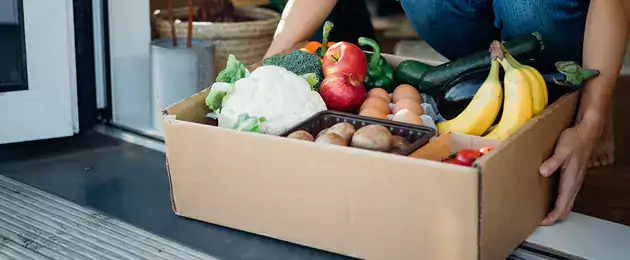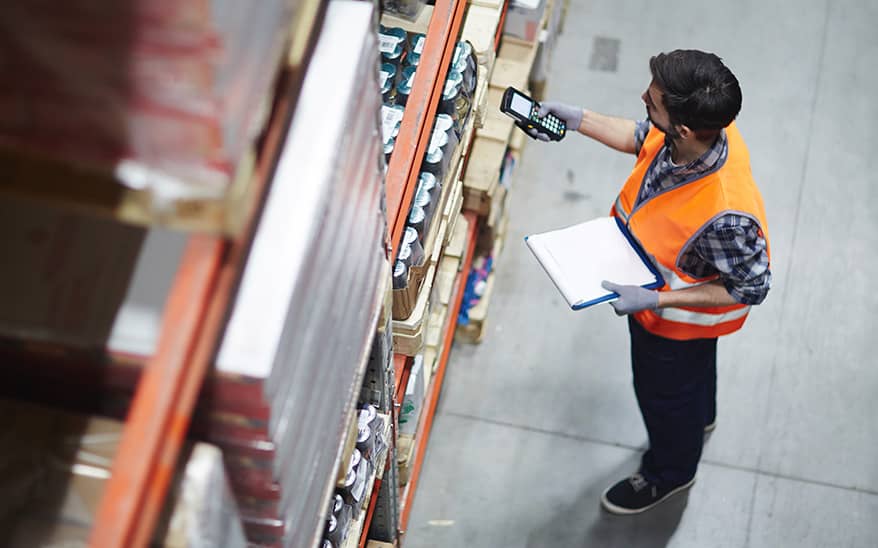Refreshing grocery in the wake of COVID-19
- 6 July 2020
- By Jacky Marolleau

2020 has been a year of significant upheaval for economies, societies and organisations globally. With the exception of health care, no other industry has been more visible at the vanguard of the battle with COVID-19 than the grocery industry, literally keeping food on the tables of billions of vulnerable people all round the world during lockdown.
Maybe not surprisingly, having been so close to the frontline of the pandemic, the grocery industry of today looks quite different from that which started the year. As non-essential retail begins to return to countries across the globe, it’s time for grocery retailers to take stock of their achievements to date and to ask: What does the “new normal” look like? And how can grocery retailers meet new consumer expectations moving forward?
Adapting to a changed landscape
First, and most obviously, COVID-19 has changed the way supermarkets of all sizes physically look and feel: wider aisles (where possible); more frequent cleaning of café and customer toilet areas; increased usage of contactless and card payments (which could see supermarkets become the first truly cashless section of society); fewer stock-keeping units being held on site and more pre-packaged (reducing the chance of touch transmission for loose fruit and vegetables) fresh items currently being sold.
Second, COVID-19 has had a fundamental impact on the psychology of how and when consumers now purchase goods. According to a recent Adobe digital report published in Forbes[1], the pandemic has accelerated the growth of ecommerce by as much as six years, leading to an increase in the overall share of mobile-first ecommerce and significant increases to relatively new hybrid approaches to purchasing, such as buy online, pickup in-store (BOPIS) or even curbside pickup.
Furthermore, according to research conducted by McKinsey & Company[2], there have been significant shifts in the number of visits consumers are willing to make to physical stores. Not surprisingly, this has resulted in increased basket sizes, underlining the consumer aversion to physical shopping trips and a willingness to spend more per visit to reduce the risks presented by public spaces and often the public transport needed to get to such locations.
As the traditional narrative around consumer psychology and spending habits continues to change to a more hybrid, pragmatic approach, the grocery industry will need to evolve to fit the new landscape it now occupies. There are therefore some key questions that need to be considered: What does the “new normal” actually look like? And what will it mean for the foundations of the industry from a customer experience and supply chain perspective?
The ecommerce boom is here to stay
There are few signs that the ecommerce explosion accelerated by COVID-19 is going to retreat anytime soon. Coupled with the increasing popularity of purchasing options such as BOPIS and curbside pickup, the grocery industry post-COVID-19 will need to focus on two key areas: putting a true, authentic omnichannel customer experience at the core of its offering and having scalable, agile technology solutions that provide warehouse, DC, supply chain and transportation management teams with the flexibility and scalability to pivot and innovate.
While many in the grocery space have been watching ecommerce business grow rapidly, ecommerce fulfilment represents a number of challenges, too. First, it represents a much higher cost to the reseller, meaning grocery retailers need to look at more efficient (sometimes automated, sometimes robotic) picking options in their distribution centres and dark stores where possible.
Second, ecommerce offers the consumer many more service options. Whether it’s delivery slots for home delivery, BOPIS, curbside collection[3] or suggestions for items that are out of stock, all of these options require systems that can collaborate and communicate from a basic inventory level, right through to picking, transportation, delivery and customer communications.
The future is bright; the future is omnichannel
No area of global commerce has been left untouched by COVID-19, yet even now, there is an opportunity to reinvigorate and reshape the industry landscape.
Effective ecommerce and hybrid fulfilment methods, along with true omnichannel capabilities, will form the basis of this regenerative process for global retail (including grocery) and its billions of worldwide customers.
Despite the challenges many in the grocery industry have faced over the last four months, technology remains a major priority, according to the findings of Retail Week’s annual flagship report[4]. So, as we finally look ahead toward a future post-coronavirus, ask yourself this: “Are the ERP solutions we currently operate fit for the purpose against what is now such a dynamic and fast-paced industry backdrop?”
Whether it’s digital self-service, BOPIS or curbside pickup, more effective inventory management, super-fast dark-site activation or true omnichannel capabilities, Manhattan Associates’ industry leading solutions and teams of experts (recognised by Gartner for more than a decade) are here to help you and your team navigate the challenges of the “new normal” in the grocery industry.
[1] forbes.com/sites/johnkoetsier/2020/06/12/covid-19-accelerated-e-commerce-growth-4-to-6-years/#1f0677bb600f
[2] mckinsey.com/featured-insights/asia-pacific/how-chinese-consumers-are-changing-shopping-habits-in-response-to-covid-19
[3] glossy.co/fashion/fashion-brands-are-shifting-fulfillment-to-stores
[4] retail-week.com/technology/retail-2020-technology-remains-major-priority-say-retail-chiefs/7035054.article?authent=1





